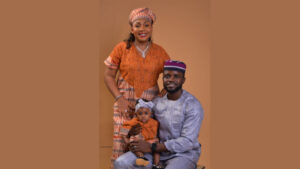
WASHINGTON (BP)–The Supreme Court returned to the issue of partial-birth abortion Nov. 8, weighing oral arguments on Congress’ prohibition of the grisly procedure.
The Bush administration urged the high court to overturn lower court opinions striking down the 2003 law, while abortion rights advocates called for the justices to treat the federal ban the same as they did a state ban in 2000 by invalidating it.
The Partial-birth Abortion Ban Act, which was passed by about two-thirds of both houses of Congress, bars a procedure typically used in the fifth or sixth month of pregnancy. In the method as normally practiced, an intact baby is delivered feet first until only the head is left in the birth canal. The doctor pierces the base of the infant’s skull with surgical scissors before inserting a catheter into the opening and suctioning out the brain, killing the baby. The technique provides for easier removal of the baby’s head.
“Congress held six hearings over four different Congresses and heard from dozens of witnesses in determining that partial-birth abortions are never medically necessary, pose health risks and should be banned,” Solicitor General Paul Clement told the justices during the oral arguments. “As a result, Congress was entitled to make a judgment in furthering its legitimate interests that they were going to ban a particularly gruesome procedure that blurred the line between abortion and infanticide.”
Clement told the high court it should defer to Congress because the legislative body’s findings were reasonable.
Priscilla Smith, arguing on behalf of Nebraska abortion doctor Leroy Carhart, challenged the accuracy of Congress’ findings and said the law was a slap at the high court.
Congress’ “real argument here is with this court in the court’s ruling in [the 2000 case],” Smith told the justices. “The only course here that preserves independence of the judiciary … [and] will protect women from needless risks of uterine perforation, infertility, sepsis and hemorrhage is to hold this act unconstitutional.”
The attention of reporters and observers at the arguments was focused on Associate Justice Anthony Kennedy, who supported the Nebraska ban that was struck down in a 5-4 decision by the high court six years ago. Kennedy wrote a strong dissent from the majority in that case, joining then-Chief Justice William Rehnquist and associates Antonin Scalia and Clarence Thomas in the minority.
Kennedy was actively involved in questioning the lawyers, and pro-life lawyers who attended the arguments said afterward they did not believe he indicated a retreat from his previous support for a ban.
Chief Justice John Roberts and the newest associate justice, Samuel Alito, were not on the court in 2000, but backers of the partial-birth ban are hopeful their record as strict constructionist judges at the appellate level means they will back the law and provide a 5-4 majority in its support. Alito replaced retired Associate Justice Sandra Day O’Connor, who voted with the majority that struck down the Nebraska ban.
The arguments actually involved two appeals court rulings on the federal ban and lasted for two hours. The first hour focused on Gonzales v. Carhart, an appeal from the Eighth Circuit Court of Appeals in which the law was invalidated based on its lack of an exception for the health of the mother. The second hour consisted of a consideration of Gonzales v. Planned Parenthood, out of the Ninth Circuit, which also said the ban imposes an undue burden on women and is too vague.
Clement argued for the federal government in both cases. Smith, a lawyer for the Center for Reproductive Rights, represented opponents of the ban in the first hour, and Eve Gartner argued on behalf of the Planned Parenthood Federation of America in the second hour.
The court is expected to issue an opinion in the cases before it adjourns next summer.
Congress approved the ban in 2003 with a 64-34 vote in the Senate and a 281-142 vote in the House of Representatives. Congress twice had adopted partial-birth abortion bans in the 1990s only to have President Clinton veto them. In both 1996 and 1998, the House achieved the two-thirds majorities necessary to override vetoes, but the Senate fell short.
After President Bush signed the bill into law in November 2003, abortion rights organizations quickly challenged it in three courts and blocked its enforcement. Federal judges in New York City, San Francisco and Lincoln, Neb., struck down the law. Three-judge panels in the Ninth Circuit, based in San Francisco; Eighth Circuit, based in St. Louis, and Second Circuit, based in New York, upheld the lower court decisions.
The Southern Baptist Ethics & Religious Liberty Commission signed on to a friend-of-the-court brief in support of the ban in the Gonzales v. Carhart case. The U.S. Conference for Catholic Bishops wrote the brief, which was joined by other religious organizations as well.
The Southern Baptist Convention approved resolutions condemning the partial-birth procedure in both 1996 and 2002.
The judiciary’s requirement of an exception for a mother’s health has frustrated attempts to enact a meaningful prohibition on the partial-birth procedure. Until now, the dilemma that advocates of the ban have been unable to solve is this: If they pass a partial-birth abortion ban without a health exception, the courts strike it down; if they approve a ban with a health exception, it is ineffective because of the judiciary’s definition of “health.”
In its 1973 Doe v. Bolton opinion, which accompanied the Roe decision, the Supreme Court defined maternal health so expansively it had the practical effect of permitting abortion for any reason throughout all stages of pregnancy.
–30–















